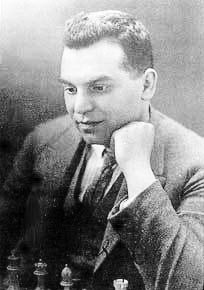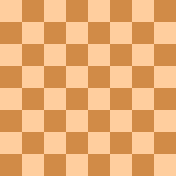Richard Réti facts for kids
Quick facts for kids Richard Réti |
|
|---|---|
 |
|
| Full name | Richard Selig Réti |
| Country | Czechoslovakia (after 1918) Austro-Hungarian Empire (before 1918) |
| Born | 28 May 1889 Bazin, Austro-Hungarian Empire (now Pezinok, Slovakia) |
| Died | 6 June 1929 (aged 40) Prague, Czechoslovakia (now Czech Republic) |
Richard Réti (born May 28, 1889, died June 6, 1929) was a famous chess player. He was also a writer about chess and created special chess puzzles called 'endgame studies'. He was from Austria-Hungary, which later became Czechoslovakia.
Richard Réti was a key person in a new way of playing chess called 'hypermodernism'. He wrote important books about this style, helping many people learn about it.
Contents
Early Life and Studies
Richard Réti was born in a town called Bazin in Austria-Hungary (today it's Pezinok, Slovakia). His father was a doctor for the army.
His older brother, Rudolph, was a famous musician. Richard Réti later went to Vienna to study mathematics at the university.
Chess Career Highlights
Richard Réti was one of the best chess players in the world during the 1910s and 1920s. At first, he played in a classic style, liking openings like the King's Gambit.
After World War I, his style changed. He became a leader in the 'hypermodern' chess movement. This new style focused on controlling the center of the board from a distance. He had great success from 1918 to 1921, winning many tournaments.
In 1925, Réti set a world record for blindfold chess. He played 29 games at the same time without looking at any board! He won 21 games, drew 6, and lost only 2.
Réti also created many interesting endgame studies. These are chess puzzles where you have to find a way to win or draw from a difficult position.
Death
Richard Réti died on June 6, 1929, in Prague from scarlet fever. His ashes are buried in the Jewish section of the Zentralfriedhof cemetery in Vienna, next to his father.
Richard Réti's Legacy
The Réti Opening (1.Nf3 d5 2.c4) in chess is named after him. This opening is a popular choice for players who like the hypermodern style.
Réti achieved a famous victory against World Champion José Raúl Capablanca in 1924. Capablanca had not lost a game in eight years! This was also the only time Réti beat future world champion Alexander Alekhine.
Réti's books are still important for chess players today. His books Modern Ideas in Chess (1923) and Masters of the Chess Board (1933) are studied by many.
Famous Chess Study
| a | b | c | d | e | f | g | h | ||
| 8 |

|
8 | |||||||
| 7 | 7 | ||||||||
| 6 | 6 | ||||||||
| 5 | 5 | ||||||||
| 4 | 4 | ||||||||
| 3 | 3 | ||||||||
| 2 | 2 | ||||||||
| 1 | 1 | ||||||||
| a | b | c | d | e | f | g | h | ||
Réti created one of the most famous chess studies. It was published in 1921. In this puzzle, it looks like the white king cannot stop the black pawn from reaching the end. Also, the black king can easily stop the white pawn.
The clever solution is for the white king to move in a way that helps both its own pawn and stops the black pawn at the same time. This uses a special trick based on how chess pieces move.
- 1. Kg7! h4 2. Kf6 Kb6
- If Black plays 2...h3, then 3.Ke7, and the white king can help its own pawn.
- 3. Ke5!!
- Now the white king gets to its own pawn just in time, or it can catch the black pawn.
- 3... h3 4. Kd6 and the game ends in a draw.
Notable Games
- Réti vs. Akiba Rubinstein, Karlsbad 1923 – A great example of Réti's opening style.
- Réti vs. Jose Raul Capablanca, New York 1924 – His famous win against the world champion.
- Réti vs. Alexander Alekhine, New York 1924 – Réti's only win against Alekhine.
- Réti vs. Efim Bogoljubov, New York 1924 – This game won a special prize for being brilliant.
A book of his games, called Reti's Games of Chess, was published with notes by H. Golombek.
See also
 In Spanish: Richard Réti para niños
In Spanish: Richard Réti para niños
- List of Jewish chess players

